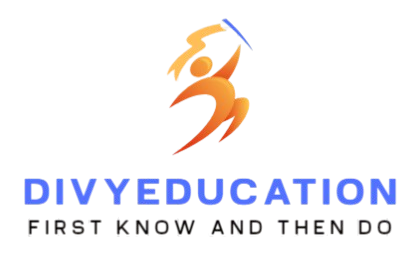Animator (Professional)
What is Animator (Professional)?
A professional animator is someone who creates visual effects, animated characters, and sequences for films, television shows, video games, advertisements, and other forms of media. The work involves designing, drawing, and using computer software to bring images or characters to life. Animators typically specialize in areas like 2D animation, 3D animation, stop-motion, or special effects.
Education Eligibility
To pursue a career in animation, you typically need the following:
- Basic Education: A minimum of a high school diploma is required. Some positions may also require a background in fine arts, design, or media studies.
- Undergraduate Education: Most animators pursue a Bachelor’s degree in Animation, Digital Arts, Graphic Design, or Computer Graphics. A degree is important to gain technical skills and creative knowledge.
- Postgraduate Education (optional): Some animators pursue a Master’s degree to specialize in certain areas, like 3D animation or visual effects.
Handicapped Eligibility
Handicapped or disabled individuals are eligible to become professional animators if they meet the educational requirements and can perform the tasks associated with animation. Many universities and colleges provide facilities or special accommodations for students with disabilities, such as:
- Assistive technology or software for physical disabilities
- Flexible learning environments
- Mentorship programs
Admission Process
The admission process for animation programs typically involves:
- Application Form: Filling out an application for the animation course or program of your choice.
- Portfolio Submission: You may need to submit a portfolio showcasing your previous work (e.g., drawings, animations, digital art). This is crucial for demonstrating creativity and technical ability.
- Entrance Exam or Interview: Some institutions conduct entrance exams or interviews to assess your artistic ability, technical skills, and passion for the field.
- Academic Qualifications: Submission of your academic certificates or previous degree(s).
Entrance Exam
Some institutions may require an entrance exam to assess:
- Artistic skills such as drawing, sketching, and conceptualizing designs.
- Creativity and original thinking.
- Understanding of basic animation concepts.
- Knowledge of tools/software like Adobe Animate, Autodesk Maya, etc.
These exams may involve creating short animations, characters, or solving design-related problems.
Colleges and Universities
Many universities and colleges offer animation programs. Here are a few notable ones:
- USA: California Institute of the Arts, Savannah College of Art and Design (SCAD), Ringling College of Art and Design.
- India: National Institute of Design (NID), MAAC, MIT Institute of Design, and more.
- UK: University of the Arts London, Bournemouth University.
- Australia: The University of Sydney, Royal Melbourne Institute of Technology (RMIT).
Scholarships
Many institutions and organizations offer scholarships for animation programs. These scholarships may be based on merit, need, or specific creative achievements. Some common scholarships are:
- Government-sponsored scholarships for specific demographics (such as minorities or disabled individuals).
- Private scholarships offered by animation software companies or media organizations.
-
Many institutions and organizations offer scholarships for animation programs. These scholarships may be based on merit, need, or specific creative achievements. Some common scholarships are:
- Government-sponsored scholarships for specific demographics (such as minorities or disabled individuals).
- Private scholarships offered by animation software companies or media organizations.
- University-specific scholarships based on academic performance or portfolio excellence.
In Animator (Professional) Time and Expenses
- Time:
- Completing a degree in animation typically takes 3-4 years for a Bachelor’s program. A Master’s program may take an additional 2 years.
- Working hours can vary depending on the studio or freelance work. Full-time animators usually work 40 hours per week, but tight deadlines can lead to overtime.
- Expenses:
- Tuition fees for animation courses can range from $5,000 to $40,000 per year (depending on the country and institution).
- You may need to purchase animation software (like Adobe Creative Cloud, Autodesk Maya), which can cost around $200–$1,500 per year.
- The cost of hardware (like a high-performance computer, drawing tablets) can also add up.
Average Income
The average income of an animator varies based on experience, location, and type of work:
- Entry-level animators (0-2 years of experience) can earn between $35,000–$50,000 per year.
- Mid-level animators (3-5 years of experience) earn approximately $50,000–$75,000 annually.
- Experienced animators (10+ years) or those in senior roles (such as animation directors or lead animators) can earn $80,000 or more annually.
- Freelancers may charge per project, which varies widely based on complexity and client.
Growth in Career
The animation industry offers excellent growth opportunities:
- Junior Animator → Senior Animator → Lead Animator → Animation Director: As you gain experience, you can move into higher roles such as animation supervisor, lead animator, or director.
- You may also branch out into related fields like visual effects (VFX), 3D modeling, or game design.
- With experience and recognition, animators may also transition into teaching or consulting roles.
Specialists
There are various animation specializations:
- 2D Animator: Focuses on creating 2D animations, either by hand-drawing or using digital tools.
- 3D Animator: Specializes in creating three-dimensional characters and environments.
- Character Animator: Focuses on animating characters and their movements.
- Visual Effects (VFX) Artist: Works on integrating animation with live-action footage.
- Stop Motion Animator: Uses physical objects and shoots frame-by-frame animations.
Scope in Government and Private
- Private Sector:
- Animation Studios: Animation for films, TV, advertisements, or games (e.g., Pixar, DreamWorks, Blizzard Entertainment).
- Freelance Work: Many animators work as freelancers for various clients across the globe.
- Advertising Agencies: Animation is often used in marketing and promotional content.
- Government Sector:
- Some government agencies may hire animators for public service announcements or educational content.
- Educational institutions may employ animators for creating educational animations.
- Government-run film or media organizations may hire animators for documentary-style content or animation projects.
Special Eligibility for a Person
-
While there are no specific eligibility requirements for people with special needs, there may be accommodations for those who need them. For example:
- Special education plans may be available for people with disabilities.
- Animation software with built-in accessibility features may also be available.
What Work Will I Have to Do at My Workplace ?
-
At your workplace, you will typically:
- Create animations using software (2D/3D).
- Design characters, backgrounds, and layouts for animated projects.
- Collaborate with other animators, designers, directors, and editors to create the final product.
- Edit and fine-tune animations, ensuring the proper movement and timing.
- Meet deadlines and work under pressure for projects, especially when working in a studio or on a high-profile production.
These tasks may differ based on your specialization (2D vs. 3D) or the specific job role within the animation process.

